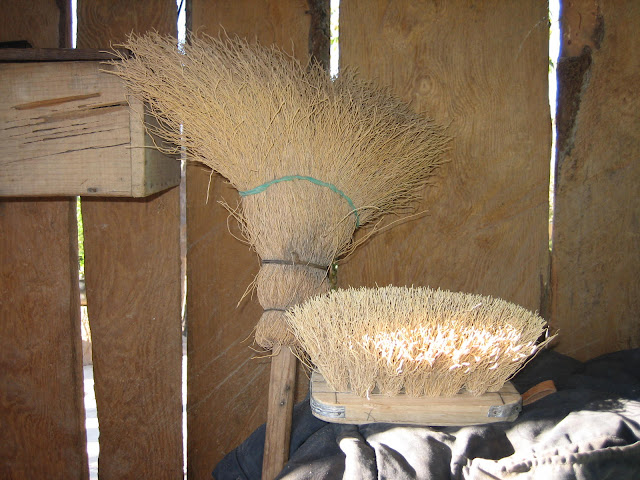Just think how happy you would be if you lost everything
You have right now, and then... got it back again.
Frances Rodman
 |
| Making pastries |
Dessert Pastries From Outdoor Adobe Clay Oven
The day we have been waiting for, since we like breads and pastries and make them ourselves on the boat, and wanted to taste and compare notes.
 |
| Outdoor oven |
 |
| In the oven |
 |
| Roscas |
 |
| Special rosca for Mike and Marie |
Ramón went to work this morning after splitting the wood needed to bake today’s goodies. At 58 he still does backbreaking stonework on the cobblestone roads that need constant repairs. At home, he always keeps busy unless he’s trying to think up something interesting for us to do – he then sits on a chair outside, leans back, closes his eyes for a while and ponders. He is also heavily involved in taking care of Krystal, their two year old. I mistakenly thought Mexican men weren’t involved in the raising of kids but was told that changed about 20 years ago. When travelling by horse, he prefers to go bareback and you can see a gleam of pride in Chayo’s eyes when she watches him ride up. We find it really strange that he always wears heavy work-boots around the ranch and that on this work day he donned leather sandals that he quickly took off upon returning home for dinner. When helping bring lumber out of the woods with horses, he was wearing sandals too. We were told this is common. Boots are expensive so they are used sparingly.
Once the oven has reached the right temperature, all the coals and ashes are taken out of it. It is then wiped clean with a brand new broom made on the spot with green shrubbery. Once cleaned out, some metal covers the door to keep the oven warm. One by one the trays layered with goodies to bake go into the oven. She checks regularly to see what needs to be turned around as there are hotter and cooler spots in the oven and to see if anything is ready to take out and be replaced by other unbaked goodies.
Today Jose Luis (son) is off work and he offered to cook lunch for us. How many kids back home would do chores and offer to cook lunch on their days off? Since he has been working at the fancy Sierra Lago Resort and Spa for 5 years, he has paid attention to what the chef there cooks and is practicing at home. He loves cooking and it shows. He makes a very tasty Aztec Tortilla Soup followed by some fried steak with salad. He and Mike later go off into the woods to pick up firewood that had already been selected and cut up.
We visit in the dry season and are told that the week after we leave they’ll be planting the corn. Should the rains come as planned, they will harvest it in December. The corn used to be planted by hands just a few years ago and it would take 4 days to cover 3.5 hectares (approximately 7 acres). There are now 4 privately owned tractors in town that can be rented by the hour. Thanks to this, it now only takes 2 hours (at 450 pesos/hour = $36US/hour) to plant the same fields. Picking the corn however is still done by hands with donkeys/burros carrying the loads. We will see if we can come back to visit the area during the wet/rainy season to see all of the fields and trees green and shiny. It would be magnificent. We are also told that they have fireflies in August – something always magical to see.
Ramón demonstrates how he fabricates his small hand brooms after showing us how to pick the roots that are used to make them. The roots come from a type of grass (somewhat like pampas grass but not as large) that seems to grow in many areas around here. He charges so little for these artfully made brushes, small and large brooms. Small hand brooms are 15 ($1.20) pesos, brushes 30 ($2.40) pesos, large brooms 45 ($3.60) pesos. Should he sell these in tourist areas, he’d easily get $10 for the smallest ones…
 |
| Digging root for broom/brush making |
 |
| Roots ready to be washed |
Vice for making brushes
|
Ramón making hand broom - look at the pride on that face
|
 |
| Wrapping head of small hand broom |
| Large broom and brush |
Small hand brooms - one was given to us
|




No comments:
Post a Comment
We are always happy to hear from you but at times it may take a while to get a reply - all depends if we have access to the internet.